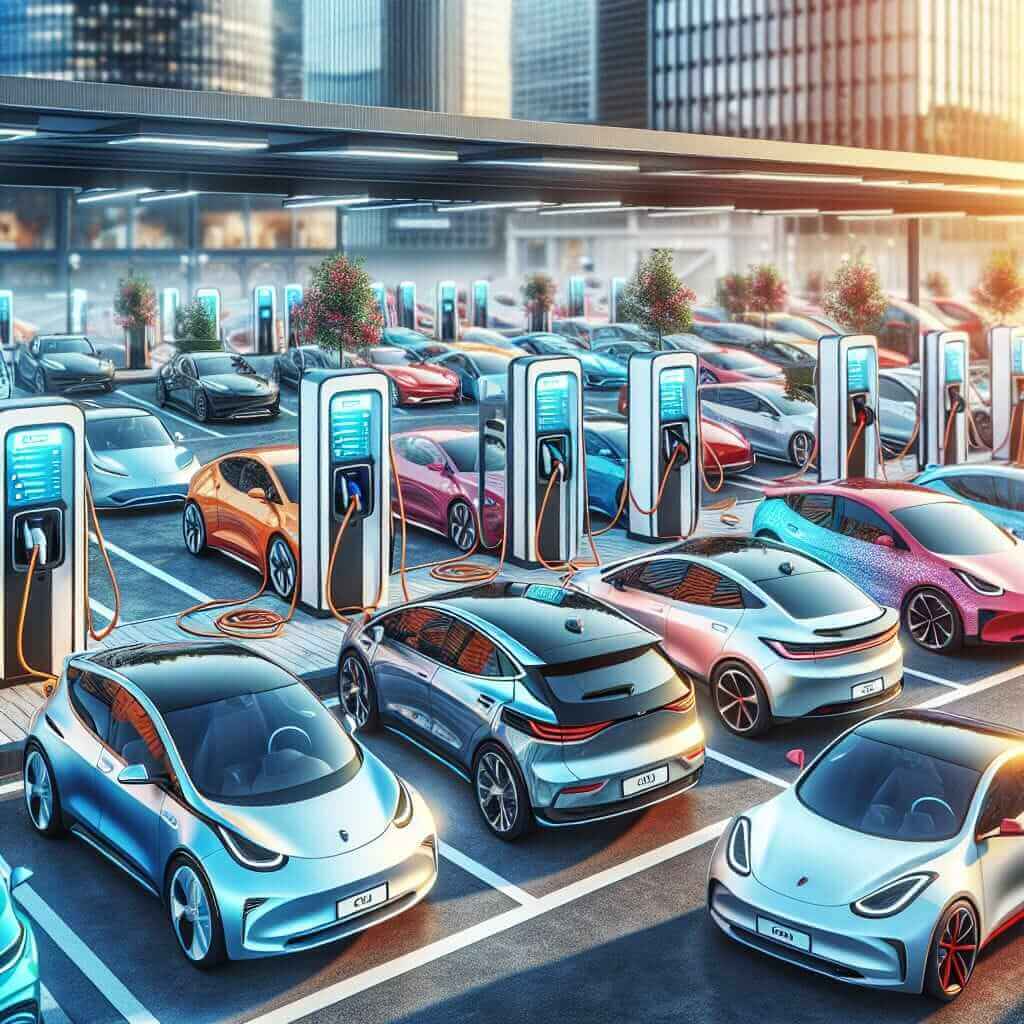The IELTS Reading section is designed to test a candidate’s reading skills by having them read various texts and answer questions based on them. One recurring theme in recent IELTS exams appears to be “Technological advancements in transportation.” Given the rapid development in this field, it’s a popular and timely topic. By analyzing past IELTS papers and emerging trends, we can reasonably predict the potential return of this theme in future exams. This article aims to provide you with a comprehensive reading practice based on this topic, complete with a passage, questions, answers, vocabulary, and grammar notes.
Reading Practice
Passage
Technological Advancements in Transportation
Transportation has undergone significant changes over the past century, driven primarily by technological advancements. These innovations have not only improved the efficiency and safety of transport systems but also revolutionized the way we travel and transport goods.
The introduction of the automobile in the early 20th century marked a significant milestone. With mass production techniques pioneered by Henry Ford, cars became accessible to the general public. The establishment of extensive road networks followed, further enhancing mobility and contributing to urban sprawl.
In recent years, electric vehicles (EVs) have gained momentum. They are seen as a sustainable alternative to traditional fossil-fuel-powered cars. Manufacturers like Tesla have made substantial progress in battery technology, extending the range of EVs and reducing charging time. Governments worldwide are now investing in charging infrastructure to support the growing number of EVs on the roads.
Another area of innovation is in public transportation. Autonomous vehicles (AVs) and drones are at the forefront of this change. Cities like Singapore and Tokyo are already experimenting with self-driving buses, aiming to reduce traffic congestion and improve efficiency. Drone technology is also being explored for last-mile delivery services, promising faster and more reliable deliveries.
In aviation, the development of supersonic jets is on the horizon. Companies such as Boom Supersonic are working on aircraft that can significantly cut down travel time. For instance, a flight from New York to London could take as little as three hours, making international travel more convenient.
The maritime industry has also seen dramatic transformations. Autonomous ships, equipped with advanced navigation systems, have the potential to reduce human error and enhance safety. These vessels can operate with minimal crew and optimize routes based on real-time data, saving fuel and reducing operational costs.
However, these advancements come with challenges. Issues like cybersecurity, regulatory frameworks, and public acceptance need to be addressed. Additionally, the environmental impact of producing new technologies cannot be overlooked. It’s crucial that as we move forward, a balance is maintained between innovation and sustainability.
In conclusion, technological advancements in transportation are shaping the future in unprecedented ways. While there are hurdles to overcome, the potential benefits in terms of efficiency, safety, and sustainability make it an exciting field to watch.
Questions
Multiple Choice
-
What was a major milestone in transportation in the early 20th century?
- A. Development of electric vehicles
- B. Mass production of cars
- C. Introduction of autonomous ships
- D. Innovations in drone technology
-
What is one benefit of supersonic jets according to the passage?
- A. Reducing travel time
- B. Lowering operational costs
- C. Improving fuel efficiency
- D. Enhancing public transportation
True/False/Not Given
-
The passage suggests that antisipation of human error is a potential benefit of autonomous ships.
- A. True
- B. False
- C. Not Given
-
According to the passage, electric vehicles are less expensive to produce than fossil-fuel-powered cars.
- A. True
- B. False
- C. Not Given
Matching Information
-
Match the following advancements to the benefits they provide:
- A. Autonomous vehicles
- B. Drones
- C. Supersonic jets
i. Cutting down travel time significantly
ii. Enhancing last-mile delivery services
iii. Reducing traffic congestion
Sentence Completion
- Companies working on supersonic jets aim to __ travel time between major international cities.
Answers
- B
- A
- A
- C
- A – iii, B – ii, C – i
- significantly reduce
Common Mistakes
- Misinterpreting specific details: Pay close attention to specific information mentioned in the text, such as the benefits of certain technologies.
- Skimming too quickly: While skimming is a useful strategy, ensure you read key sentences carefully to avoid missing essential details.
- Overlooking plurals and singulars: These can change the meaning of the statements in True/False/Not Given questions.
Vocabulary
- Mobility /məˈbɪləti/ (noun): the ability to move freely and easily.
- Autonomous /ɔːˈtɒnəməs/ (adjective): self-governing, independent.
- Congestion /kənˈdʒɛstʃən/ (noun): overcrowding; clogging.
- Sustainable /səˈsteɪnəbl/ (adjective): able to be maintained or kept going, as an action or process.
- Innovation /ˌɪnəˈveɪʃn/ (noun): the introduction of something new.
Grammar Focus
- Passive Voice: Used frequently in academic texts to emphasize the action rather than the subject. For example: “EVs have gained momentum” vs. “People have increasingly used EVs.”
- Relative Clauses: These provide additional information about a noun. For example: “Manufacturers like Tesla, who have made substantial progress in battery technology…”
Conclusion
To excel in the IELTS Reading section, familiarize yourself with various topics, such as technological advancements in transportation. Practice regularly with passages and questions that mirror the exam’s format. Remember to focus on improving your skimming and scanning techniques, understanding complex sentences, and expanding your vocabulary. Happy practicing!

For more reading practice, don’t forget to explore related articles on our site, such as Technological Solutions to Urban Air Pollution and The Role of Public Transportation in Reducing Carbon Emissions.